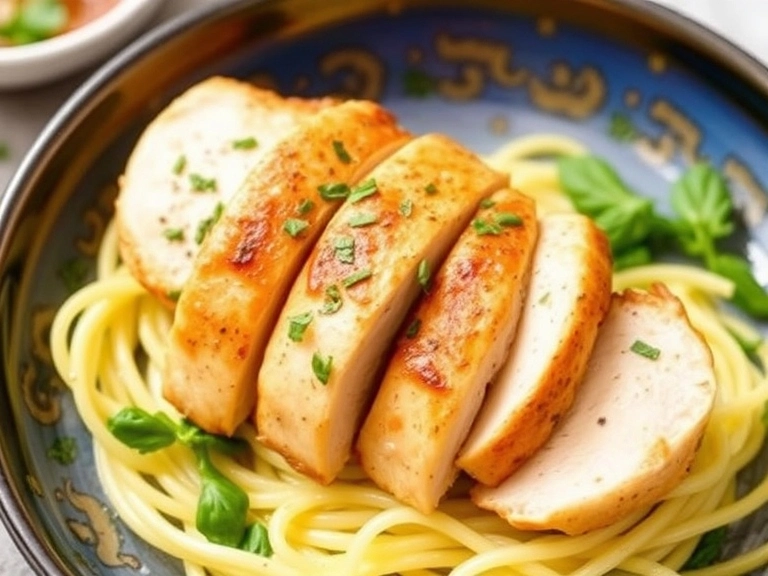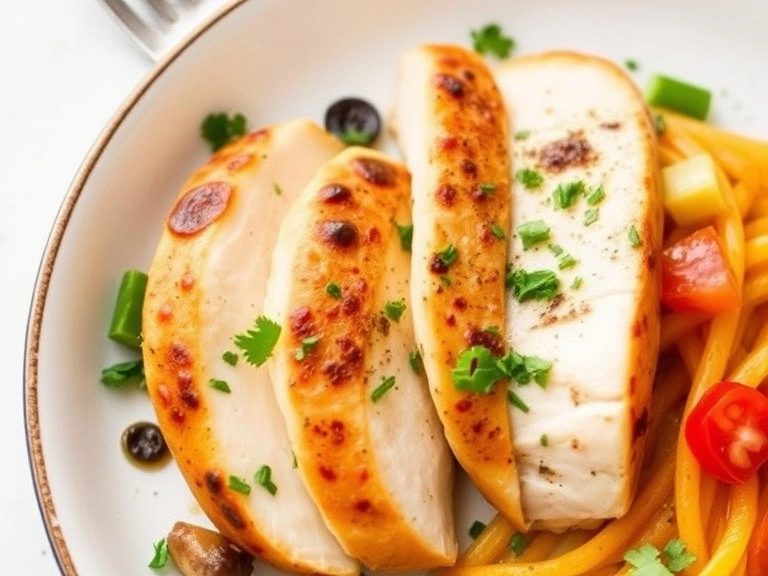Introduction:
Baking chicken breast is one of the healthiest and easiest ways to prepare a delicious meal. But how long should you bake a thin chicken breast for optimal tenderness and juiciness? If you’ve found yourself standing in front of the oven, wondering whether your chicken will turn out dry or overcooked, you’re not alone. Thin chicken breasts, due to their size, cook faster than their thicker counterparts, so it’s crucial to get the timing just right. In this article, we’ll explore the key factors that affect the cooking time for thin chicken breasts and provide you with tips to ensure they are cooked perfectly every time.

How Long to Bake Thin Chicken Breast?
The perfect cooking time for thin chicken breasts depends on several factors, such as the oven temperature and the thickness of the breast itself. Generally, thin chicken breasts will bake at 350°F (175°C) for 20 to 25 minutes, but the exact time may vary based on your oven and the size of the chicken. Here’s a breakdown of the process:
- Preheat the Oven: Start by preheating your oven to 350°F (175°C). This temperature is ideal for baking chicken breasts without drying them out.
- Prepare the Chicken Breast: If the chicken breasts are extremely thin (about 1/2 inch thick), you can place them directly on a baking sheet. If they’re slightly thicker, it may be helpful to lightly pound them to an even thickness.
- Bake the Chicken: Place the chicken on a baking tray lined with parchment paper or foil, then bake for 20 to 25 minutes.
- Check for Doneness: The best way to check if your thin chicken breast is done is by using a meat thermometer. The internal temperature should reach 165°F (74°C). If you don’t have a thermometer, you can also cut the chicken open at its thickest point. The juices should run clear, and the meat should no longer be pink.
Factors Affecting Baking Time for Thin Chicken Breasts
While the general guideline for baking thin chicken breasts is 20 to 25 minutes, there are several factors that could influence this. Here are a few:
- Oven Variations: Different ovens can have variations in heat distribution, so some ovens may cook faster or slower than others.
- Chicken Thickness: Not all chicken breasts are created equal. Even within the “thin” category, there might be slight differences in thickness that can affect cooking time.
- Chicken Temperature: If you’ve taken the chicken straight from the fridge, it might take a few extra minutes to cook compared to room-temperature chicken. Let the chicken rest for 15 to 20 minutes before baking for more even cooking.
How to Avoid Dry Chicken Breast
One of the most common issues when baking chicken breasts, especially thin ones, is dryness. Thin chicken breasts cook quickly, which increases the risk of overcooking. Here are a few tips to keep your chicken moist and tender:
- Use a Marinade: Marinating your chicken before baking can help keep it moist. Opt for a marinade that includes olive oil, lemon juice, and herbs to add flavor and moisture.
- Cover with Foil: Covering the chicken with foil while baking can help trap moisture and prevent it from drying out. You can remove the foil during the last few minutes of baking to allow the chicken to brown.
- Do Not Overbake: The most important tip is to monitor the chicken closely. Once it hits 165°F (74°C) internally, it’s done. Anything beyond that, and you risk dry, overcooked meat.
How to Check If Your Chicken Breast Is Done
To ensure that your thin chicken breast is cooked to perfection, it’s essential to check its doneness. There are a few methods to do this:
- Using a Meat Thermometer: This is the most accurate method. Insert the thermometer into the thickest part of the chicken. Once it reads 165°F (74°C), the chicken is safe to eat.
- The Cut Test: If you don’t have a meat thermometer, use a sharp knife to make a small cut in the thickest part of the chicken. The juices should run clear, and the meat should no longer be pink.
Can You Bake Thin Chicken Breasts at a Higher Temperature?
While baking at 350°F (175°C) is the most common and reliable temperature for thin chicken breasts, you can certainly experiment with higher temperatures for quicker cooking. If you prefer a slightly crispier texture, consider baking at 400°F (200°C) for around 15 to 20 minutes. However, at higher temperatures, be cautious not to overcook the chickhttps://www.recipesmeats.com/alice-springs-chicken/en.
Best Baking Time for Thin Chicken Breasts with Skin-On
If you’re baking thin chicken breasts with the skin still on, the skin will help keep the meat moist during cooking. In this case, you may need to increase the baking time slightly to allow the skin to crisp up. You can bake the chicken at 375°F (190°C) for about 25 to 30 minutes. Again, using a thermometer is the best way to ensure that the chicken is cooked through.
How to Serve Baked Thin Chicken Breast
Baked thin chicken breasts are incredibly versatile. Once you’ve got the perfect bake, there are countless ways to serve them:
- Salads: Thinly slice the chicken and serve it over a bed of greens with your favorite vegetables and dressing.
- Sandwiches or Wraps: Chicken breast makes a great addition to sandwiches or wraps. Try pairing it with avocado, lettuce, and a tangy sauce.
- As a Main Course: Serve the chicken alongside steamed vegetables or mashed potatoes for a classic meal.
- With Pasta: Sauté the chicken with some garlic and herbs, and toss it with your favorite pasta for an easy and satisfying dinner.
Frequently Asked Questions (FAQs)
- How can I prevent my thin chicken breast from drying out?
To avoid dry chicken breast, try marinating it before cooking, bake it with foil, and ensure that the internal temperature reaches 165°F (74°C) without overbaking. - Can I bake chicken breasts without covering them with foil?
Yes, you can bake chicken breasts without foil, but covering them helps retain moisture, preventing the chicken from drying out. - Should I use boneless or bone-in chicken breast for baking?
Boneless chicken breasts cook faster than bone-in ones, making them ideal for quick baking. Bone-in breasts, however, will require a little more time to cook through. - Can I bake chicken breasts at a higher temperature?
Yes, you can bake chicken breasts at a higher temperature, such as 400°F (200°C), but be mindful of the cooking time to avoid overcooking. - How do I check the internal temperature of the chicken breast?
Use a meat thermometer to check the temperature at the thickest part of the chicken. It should read 165°F (74°C) when it’s safe to eat. - Can I bake thin chicken breasts in advance?
Yes, you can bake thin chicken breasts in advance and store them in the fridge for up to 3-4 days. Reheat gently to avoid drying out.
Conclusion
Baking thin chicken breasts is an excellent way to prepare a meal that’s both healthy and delicious. With the right temperature, timing, and techniques, you can ensure your chicken turns out moist, flavorful, and tender every time. Remember, the key is not to overcook your chicken, as even a few extra minutes can make the difference between juicy and dry meat. With these tips and guidelines, you’ll be able to bake thin chicken breasts like a pro, making them a versatile addition to any meal.
Suggestions for Inbound and Outbound Links:
- Internal Links: Link to related chicken recipes or other cooking tips on your website, such as “How to Grill Chicken Breasts” or “Easy Chicken Marinades”.

